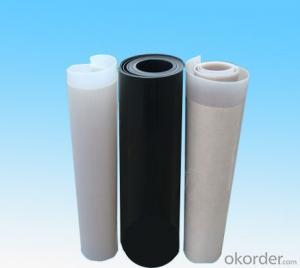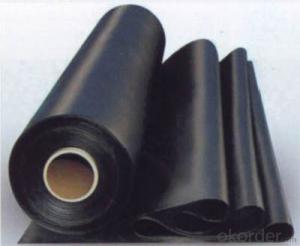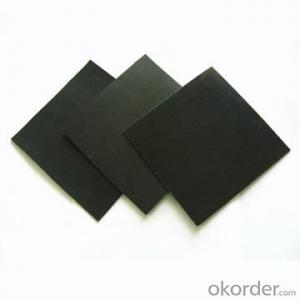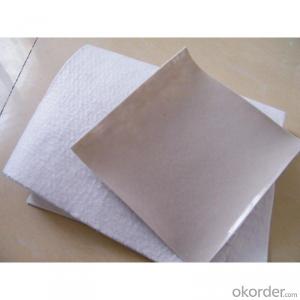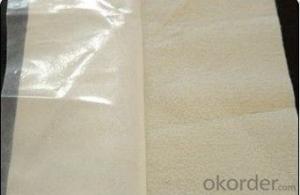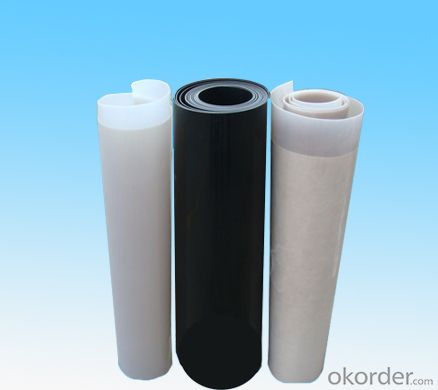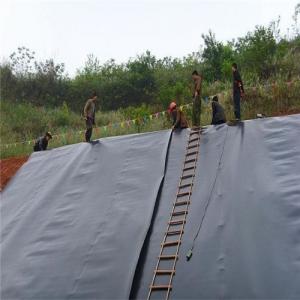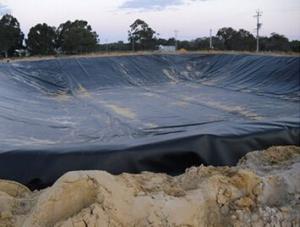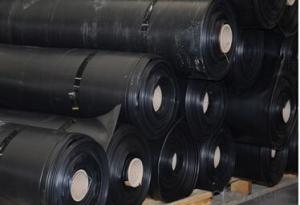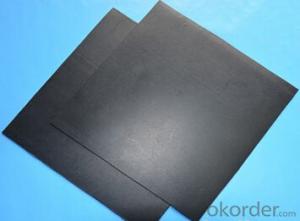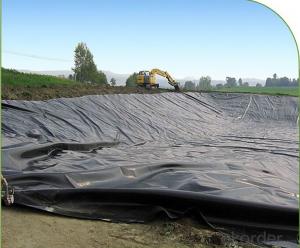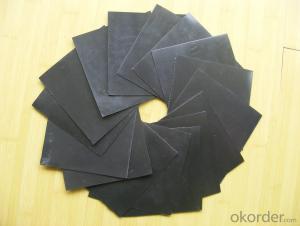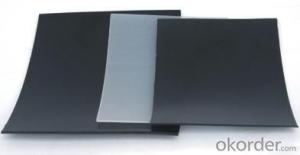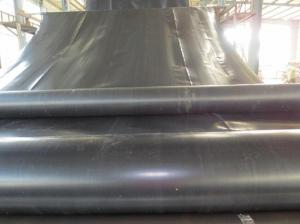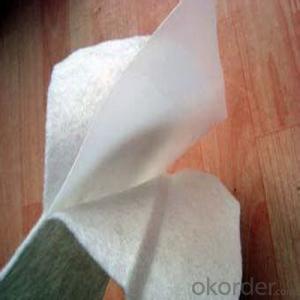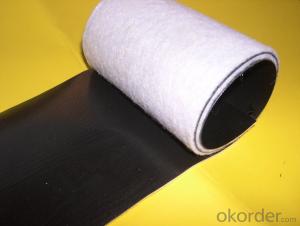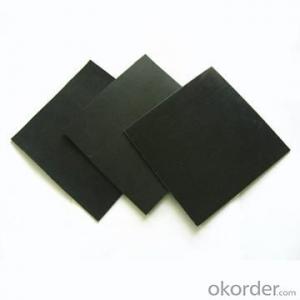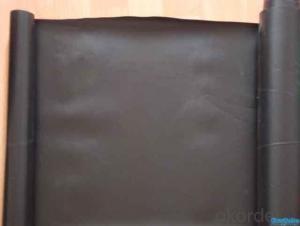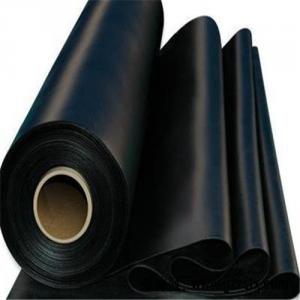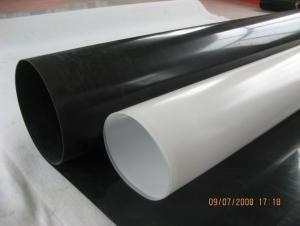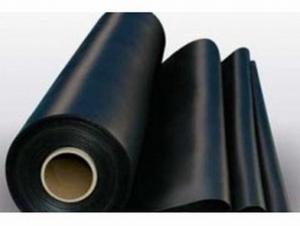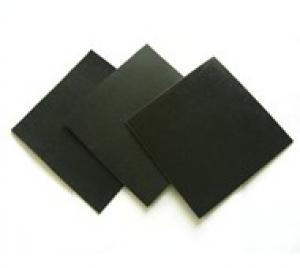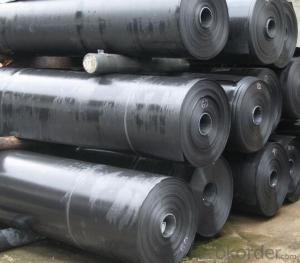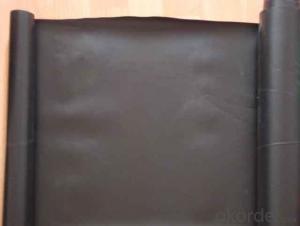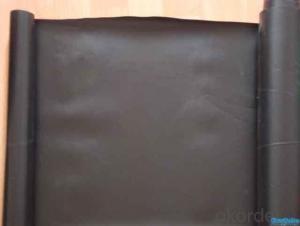2mm HDPE Geomembrane for Pond Liner and Landfill Project
- Loading Port:
- Qingdao
- Payment Terms:
- TT or LC
- Min Order Qty:
- 10000 m²
- Supply Capability:
- 300000 m²/month
OKorder Service Pledge
OKorder Financial Service
You Might Also Like
Description Of HDPE Geomembrane :
Our high density polyethylene (HDPE) geomembranes provide an impermeable barrier against a wide range
of solids and liquids. They exhibit excellent chemical and UV resistance, impermeability, and high yield and
welded seam strengths, which is widely used as the liner.
Main Features of HDPE Geomembrane:
1.Long life, anti-aging, roof material can be more than 20 years, underground can be more than 50 years.
2. Good tensile strength, high elongation.
3. Good high/low temperature flexibility
4.Easy to construct, no pollution.
5. Good anti-corrosive ability, can be used in special area
6.Various colors are available
Specifications of HDPE Geomembrane:
1052963 | Item | Test Value | |||||||
0.75mm | 1.0 mm | 1.25 mm | 1.5 mm | 1.8mm | 2.0mm | 2.5 mm | 3.0mm | ||
1 | Minimum Density(g/cm³) | 0.94 | |||||||
2 | Strength at yield,N/mm | 11 | 15 | 18 | 23 | 27 | 30 | 38 | 45 |
3 | Strength at break ,N/mm | 21 | 28 | 33 | 43 | 51 | 57 | 71 | 85 |
4 | Elongation at yield,% | 13 | |||||||
5 | Elongation at break,% | 700min | |||||||
6 | Tear Resistance N | 93 | 125 | 156 | 187 | 219 | 249 | 311 | 373 |
7 | Puncture Resistance N | 263 | 352 | 440 | 530 | 618 | 703 | 881 | 1059 |
8 | Stress Crack Resistance, hrs | 400 | |||||||
9 | Carbon Black Content, % | 2.0-3.0 | |||||||
Carbon Black Dispersion | 1 or 2 | ||||||||
10 | Standard OTI Min | 100 | |||||||
High Pressure OTI Min | 400 | ||||||||
11 | Impact Cold Crack at -70°C | Pass | |||||||
12 | Water vapor permeability (g.cm/cm2 .s.Pa) | ≤1.0×10-13 | |||||||
13 | Dimensional Stability (%) | ±2 | |||||||
Applications of HDPE Geomembrane:
1.Prevent leakage disposal in waste burying field or waste water or waste dregs disposing field,river bank,lake dam ,mine remainings ,reservior,tunnel,liquid storage ,pool(pit,mine)
2.Preventing leakage in subway ,basement,tunnel ,hole
3.Anti-solt leakage in roadbed and other groundtill
4.The plane direction laying of dam ,the vertical direction laying fou groundtill ,used in the construction fence and waste material field
5.Used in seawater or freshwater feed field
6.Used in groundtill of road,highway ,railway and waterproof layer of swelling clay and wet collapsed loess
Preventing leakage on rooftop.
Images of HDPE Geomembrane :
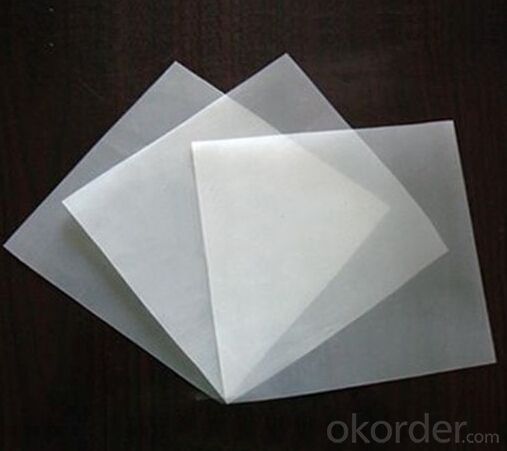
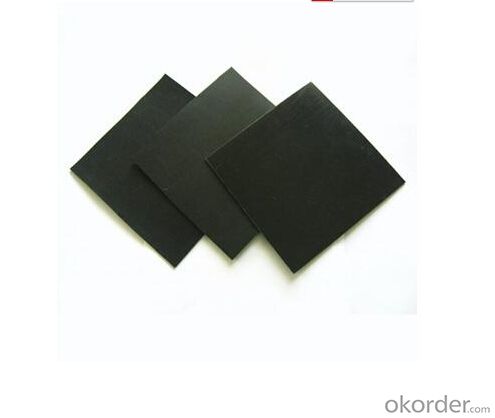
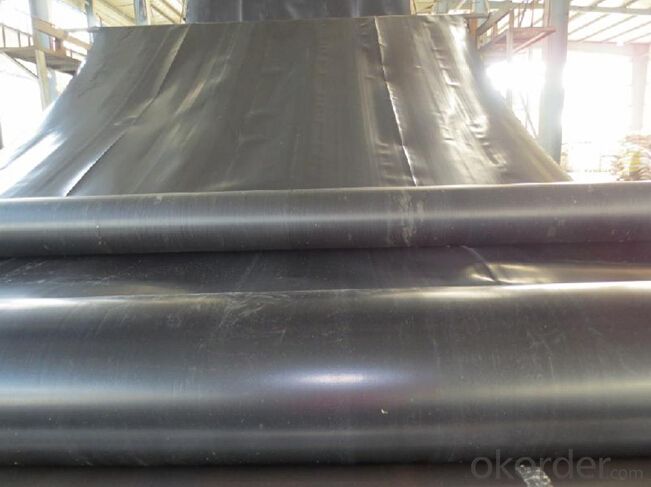
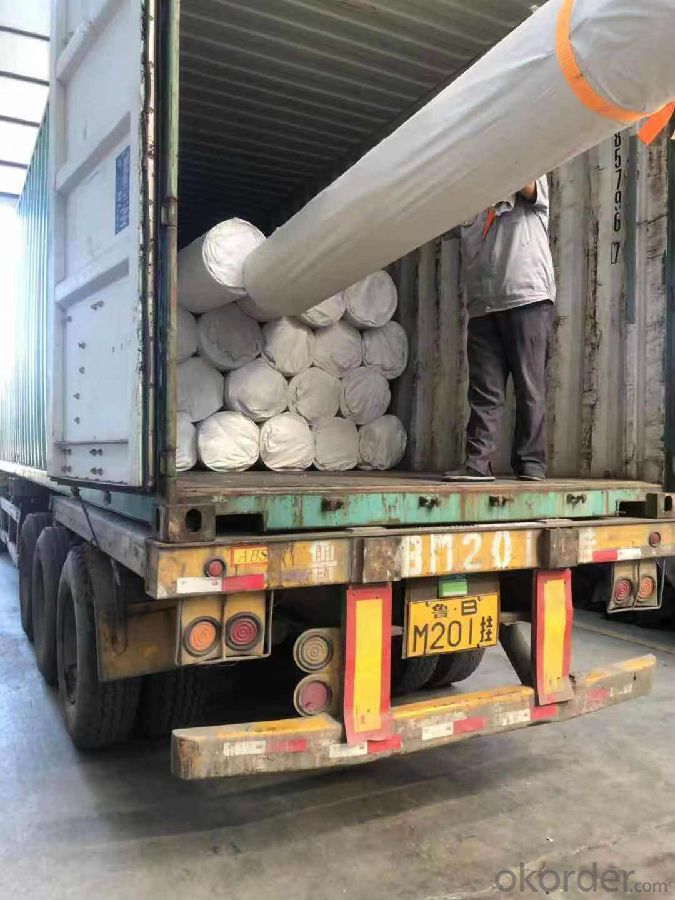
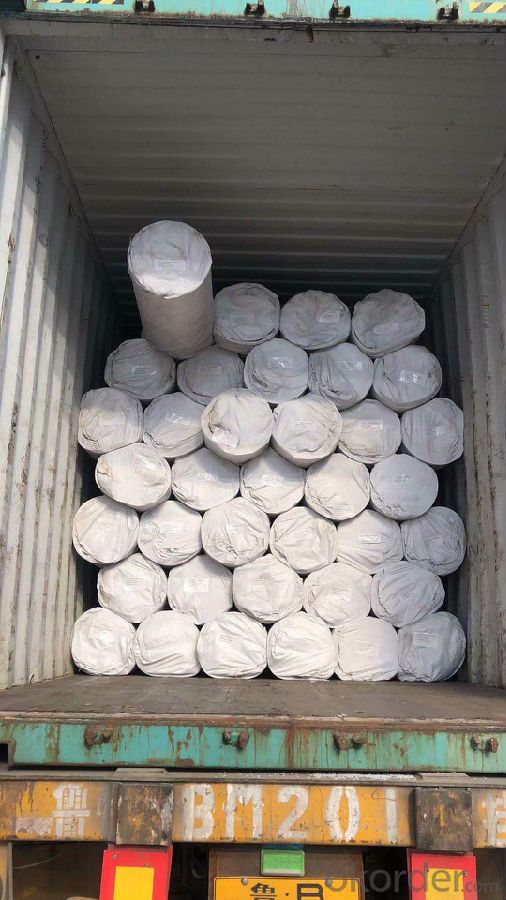
FAQ:
1. Do you supply free samples for customers?
Yes,we will supply free samples for you.Please send your address for us.
2. How Many years experience do you have?
We have been exported to more than 20 countries in the past 15 years.
3. How long do we usually reply your request?
We always reply our customer within 24 hours.
- Q: Are geomembranes resistant to punctures from animal burrowing?
- Yes, geomembranes are typically resistant to punctures from animal burrowing. They are designed to provide a barrier against penetration from various forces, including animal activity.
- Q: Imported geomembrane anti seepage film width.
- thickness specifications, since imported geomembrane has stable chemical properties. HDPE geomembrane among imported products is of best quality, impermeable, waterproof construction is simple, low cost, wide, moisture proof,draining.
- Q: Is black HDPE geomembrane eco-friendly?
- Raw material of HDPE geomembrane is HDPE particles, adding carbon?black to become black. It is buried underground to prevent hazardous liquid leakage. So HDPE geomembrane can be considered as environmentally friendly.
- Q: Can geomembranes be used in rainwater harvesting systems?
- Yes, geomembranes can be used in rainwater harvesting systems. They are commonly used as liners for rainwater storage tanks or ponds to prevent leakage and contamination of the collected water. Geomembranes provide an effective barrier between the stored water and the surrounding soil, ensuring the quality and integrity of the harvested rainwater.
- Q: What are the steps of sticking the mobile phone film?
- The packaging tool of mobile phone film : 1, wet cloth, fiber cloth, dedusting paster, mobile phone protective film, scratch cards and replacement film label Step 1 of sticking the mobile phone film clean the screen: 2, First, use the wet cloth to wipe the screen for a few times back and forth, you should try to wipe the screen of mobile phone cleanly. The wet cloth can clean the grease and fingerprints on the screen 3, use the locomotive fiber cloth to wipe the screen, you don't worry about any dust or wool to paste on the screen, they can be handleed later 4, use the locomotive dedusting paster to clean the stubborn dirt, the dust or wool can paste cleanly step two of sticking the mobile phone film screen film: The mobile phone protective film is taken out from the package and paste directly on the mobile phone screen, and then determine the joint situation between the film and the screen and the location of film 5, There are two labels on the mobile phone protective?film. First, tear number 1 label and paste the mobile phone protective?film on the screen 6 , align at the hole and edge of the mobile phone screen, at the same time, you should not touch the using layer 7, after the whole mobile phone protective film is pasted on the screen, and then open No. 2 label 8, if there are bubbles, you can use locomotive scratch card to slowly scrap the air bubble on the mobile phone screen 9, (if there is a bubble which can not be squeezed out. You can use the vacuum film to stick up the film, and then gently scrape out the bubbles with the scratch card ) 10, use the wiper to clean the screen, the entire mobile phone film process is completed
- Q: Can geomembranes be used in pond covers?
- Yes, geomembranes can be used in pond covers. They are often used as an impermeable barrier to prevent water seepage and minimize evaporation in ponds.
- Q: Can geomembranes be used in water treatment plants?
- Yes, geomembranes can be used in water treatment plants. They are commonly utilized as liners for containment and protection of water and wastewater storage facilities, such as ponds, lagoons, and tanks. Geomembranes provide an impermeable barrier, preventing the seepage of contaminants and ensuring the integrity of the water treatment process.
- Q: What are the considerations for geomembrane selection in desalination plants?
- When selecting a geomembrane for desalination plants, several factors need to be considered. These include the chemical compatibility of the membrane with the desalination process, its resistance to UV radiation and weathering, its permeability and hydraulic conductivity, its durability and resistance to punctures and tears, its ability to withstand high temperatures and pressures, and its overall cost-effectiveness. Additionally, the geomembrane should comply with any applicable regulatory requirements and standards to ensure its suitability for use in desalination plants.
- Q: Are geomembranes suitable for use in oil spill containment?
- Yes, geomembranes are suitable for use in oil spill containment. They are impermeable synthetic liners designed to prevent the leakage of fluids, including oil. They can be used to create a barrier that restricts the spread of oil in case of a spill, providing an effective containment solution.
- Q: Can geomembranes be used for decorative swimming pools?
- Yes, geomembranes can be used for decorative swimming pools. Geomembranes are typically used as a lining material to prevent water leakage in various applications, including swimming pools. They offer durability, versatility, and can be customized to create visually appealing designs for decorative pools.
Send your message to us
2mm HDPE Geomembrane for Pond Liner and Landfill Project
- Loading Port:
- Qingdao
- Payment Terms:
- TT or LC
- Min Order Qty:
- 10000 m²
- Supply Capability:
- 300000 m²/month
OKorder Service Pledge
OKorder Financial Service
Similar products
Hot products
Hot Searches
Related keywords
